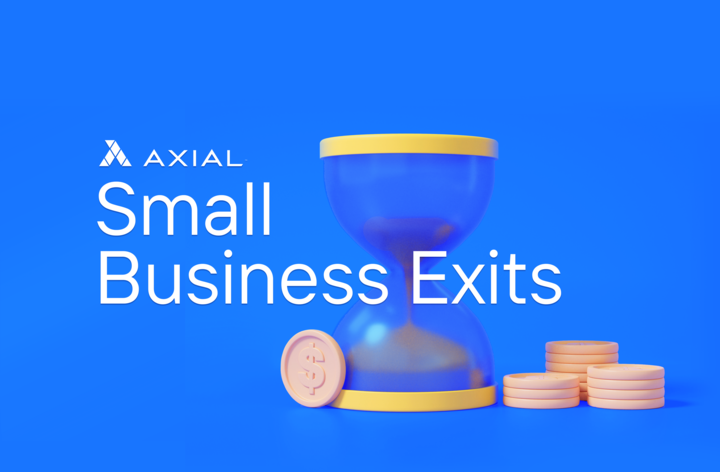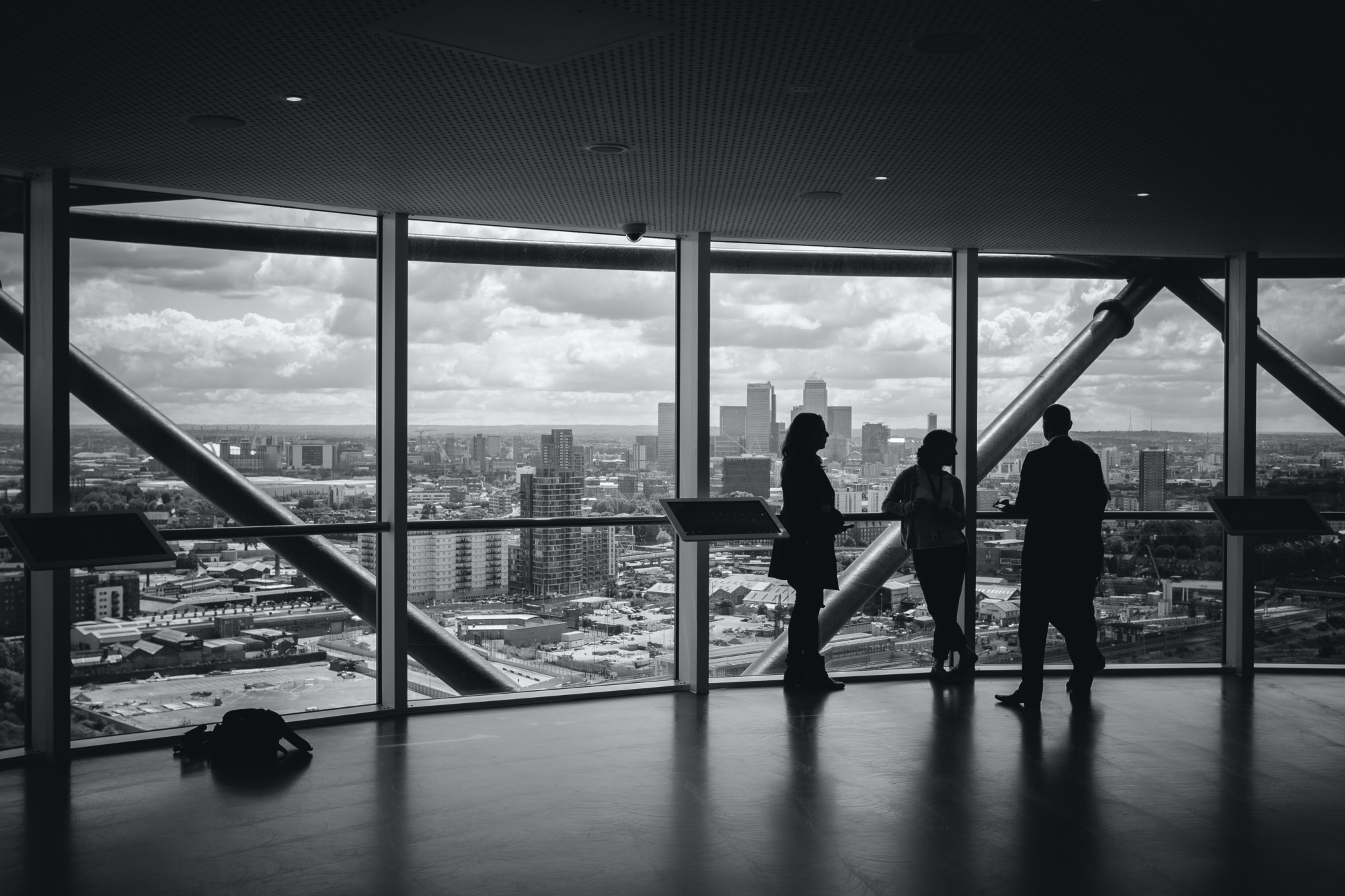In partnership with:

As we look toward the future, the view includes dislocation, volatility, and a whole lot of uncertainty. However, if you look closely enough, it also includes a significant amount of opportunity. In this week’s virtual roundtable, Axial, alongside our partners at Matrix Private Capital Group, assembled a group of ten buy- and sell-side deal professionals to discuss just that.
Axial welcomed Matrix Private Capital CEO Dick Fuld to discuss the differences between today’s health crisis and the 2008 recession, which was systematic in nature. Additionally, participants discussed why lower middle market activity continues to be so strong, how business owners should think about going to market, and the future for distressed investing.
We’d like to thank the below participants for contributing to a great discussion:
Dick Fuld, CEO, Matrix Private Capital Group [co-host]
Carle Felton, Director, Goldman Sachs Specialty Lending Group
Jeff Fishbein, Vice President, Ramex Inc.
Ken Heuer, Principal, Kidd & Company
Istvan Nadas, Vice President, Dunes Point Capital
Michael Odrich, Founder & Managing Partner, A&M Capital Partners
Christopher Parisi, Managing Director, Carl Marks Advisors
Rafael Romero, Principal, Emigrant Capital Corporation
Manan Shah, Managing Director, Focus Investment Banking
Terence Thompson, Director of Investments, DF Enterprises
Video
Audio
Show Notes
Introductions 00:00 – 22:35
Today versus 2008 – 22:35
- This crisis is nothing like what happened in 2008
- Then: no one died, it was mainly in the U.S, the government was functioning much differently
- People lost their homes and their net worth, similar to today
- Many people from ‘08 have yet to recover, and while the Fed is working hard to fill gaps, the people from ‘08 will get hurt all over again
- The Fed’s balance sheet was $750B; today we’re starting with $4.5T and are working our way to $10-12T
- The bank’s balance sheets are stronger today despite the fact that they took huge reserves
- The issues today: The balance between lives and livelihood, increasing of digital capability, the upcoming election, the impact of China & supply chains, the equity market shows no sense of rationale, there is an artificial yields curve
- $250T of global debt and the central banks can’t afford to raise interest rates
Unemployment & the waterfall effect – 27:22
- 20-30 million currently unemployed and there are probably another ~30M people who are in the “vulnerable zone”
- When people lose their jobs, they don’t spend and they don’t pay their bills, they lose their healthcare. This causes: bank failures, company defaults, social unrest
- The first round of people who were laid off was people earning ~30-50k (worker bees)
- The second round of layoffs will probably come in the $75k-500k range (ex: airlines, Wells Fargo will need to lay off thousands) and their disposable income is a lot greater
- 80% of today’s GDP is consumer spending, but if people don’t have jobs, they don’t spend; the increase in e-commerce cannot make up for the loss
- People are going to be saving more and that takes money out of the system
Rates – 30:55
- 10-year is somewhere between 60-75 basis points
- The central banks can’t afford to raise these rates based on the amount of global debt
- The big problem for older people is retirement; they’re looking for historic numbers which are no longer there
Government Stimulus – 31:42
- The Fed is montitizing everything they possibly can which is why the markets continue to be strong, but how much more can they do?
- Matrix went through the entire process and got approved for PPP funding but immediately returned it, because they knew other companies needed it more
- At the end of the day, the Fed can’t monetize everything
- What will happen to inflation?
- The people who are using the U.S. as the reserve currency are expecting us to be prudent, earnest and honest; Trust is there until it’s not and people will accept our reserve currency until they don’t
- Could we have 3-5% inflation? Yes, and then Fed’s hands are tied.
Middle market activity remains strong – 34:15
- From a macro perspective, things are bad
- No one can escape the velocity of money, but when you zero in on micro-level deal activity, things become more palatable
- The analysis that the Goldman Sachs Special Situations Group does is very specific to each company
- There are tremendous opportunities in the market right now because there is less competition and valuations have come down
- It’s no longer greed controlling the market; fear has taken control
- It’s important to look at how a company is positioned in the new normal; it really doesn’t matter much how it was doing before. Human behavior is completely different now.
- Carl Marks tells business owners that now is the time to launch their deal because of everything that’s going on
- A lot of businesses have had to do a 180 to readjust to the “new normal”, and the fastest way to do that is through M&A
- As the landscape shifts, if you’ve got a solid business, right now is a great time to be in the market
- Alvarez & Marsal Capital was anticipating that there would be some sort of economic downfall, so they built a portfolio with that in mind — they had very high underwriting standards and focused on asset-light businesses, essential businesses, structural protections, etc.
- Now is a great time to take advantage of add-on opportunities
- A&M has closed 4-5 add-ons since COVID (a lot started before pandemic, but some have started and closed in the past couple of months)
- The better management teams have been able to generate significantly more savings and efficiencies than they thought possible and are able to run ahead of budget even if they’re down on topline
- Despite all of this activity, deals will continued to be pushed off until travel has opened more widely
Considerations around coming to market right now – 49:15
- The best time to do a deal is when the markets are available, and capital is available right now
- The pandemic could last well into the second half of next year, because even once they get a vaccine, most people aren’t going to want to be one of the first to get it
- The viewpoint of both buyers and sellers should be: “Do a deal when you can”
- This is uncharted territory, so if there are deals that can get done, do them
- There is not as much noise in the market today; if a company is on a solid foundation, you can get quick attention from buyers
- For deals that have been on the sidelines over the past few months: there has been a lot of time to scrutinize the situation and get a better handle on consumer behaviors, deal structures, opportunities/challenge areas, etc.
- One thing to consider: the time between signing an LOI to close has increased significantly
- Additionally, a lot of firms are interested only in buying LLCs, so there are a lot of businesses trying to shift their business structure (in that state, LLC filing has gone from ~24 hours up to 3-4 weeks post-COVID)
- Businesses also have to consider whether or not they will succeed without a partner that has more resources
- A lot of lower middle market businesses struggling during the pandemic would benefit from raising PE capital and/or be part of a larger entity (even if it means sacrificing some of the value)
Distressed Investing – 56:50
- If a business is generating more business in this environment, that’s a fairly straight forward situation and it makes sense to look at those players
- Why would an investor want to spend their time looking at a business that is in distress and is not doing well?
- In order to tell if a business is compelling, you should have a handful of things in mind that are easy to put your finger on and know that you could change them fairly easily
- Due Diligence is an extremely important part of distressed situations, even more so than in other deals
- Because due diligence is so important on these deals, having boots on the ground is especially important, and that is putting a lot of deals on hold before they can close
- GS aggressively pursues certain businesses that are experiencing temporary dislocation, not necessarily that would be considered distressed
- There is a difference between being essentially shut down (brick-and-mortar retail, restaurants, etc.) and having a temporary dislocation
- A&M Capital is looking at businesses that they know really well (either because they owned the business before and are being approached by lenders or because they have a lot of experience in the space) and then in some cases will bring on a strategic partner on a deal to help
- A lot of the businesses that got over-levered in good times are now having to face that capital structure and are struggling because of it
- If there is a reasonable chance of a company rebounding in the next 12-18 months, structure becomes a very important part of the transaction and makes it more palatable for an investor
- Kidd & Co is looking at a lot of opportunities where businesses were able to survive the last recession on their own and don’t want to do it alone again
- Historically, the market has viewed a “distressed” situation as one that was because of capital structure failure or mismanagement, but now a lot of it is because of the business environment
- Distressed opportunities should be looked at in two buckets now: traditional distress and COVID distress
- Distressed is a different animal and it takes a different set of skills and obviously has an increased risk, so thinking about the fact that our current situation could drag out 18+ months makes it extra risky
- Emigrant typically looks at stable companies so in order for them to now look at “distressed” opportunities, they need to look for a way to somehow lock in a return in the next 18-24 months
Closing thoughts from Dick – 1:14:35
- We are in the early stages of market chaos, but from chaos comes wonderful opportunity
- Capital is king right now
- You’re going to see a ton of opportunities, but there is no formula to getting it right, so you need to look very closely at what is presented

